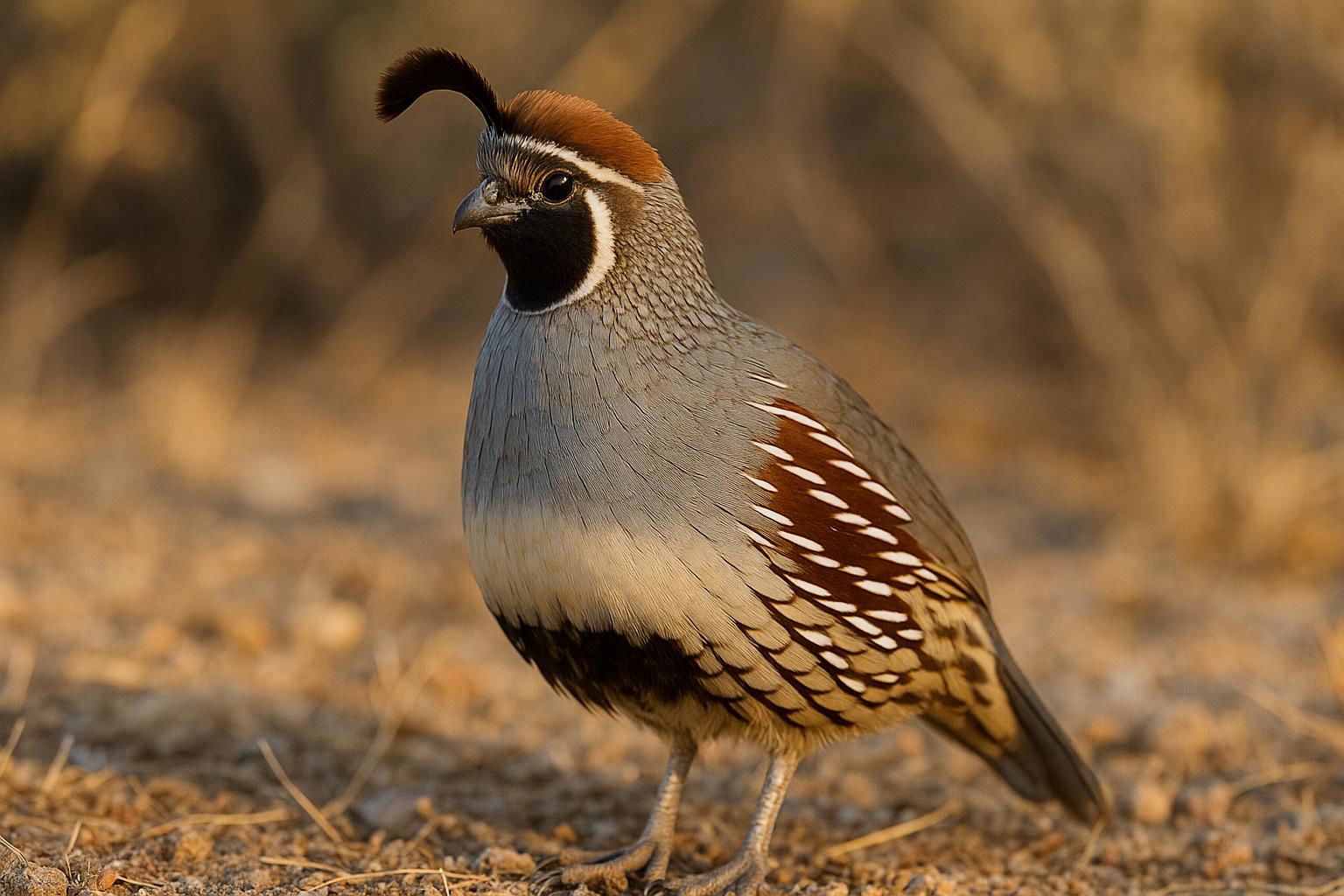
Gambel's Quail
Callipepla gambelii
Gambel's Quail (Callipepla gambelii) is a distinctive and charismatic bird native to the arid regions of the southwestern United States and parts of Mexico. These small, ground-dwelling birds are recognized by their plump bodies, rounded wings, and short tails. Both males and females display a striking black topknot, though it is more prominent in males. Adult males exhibit a vibrant plumage with a gray body, chestnut sides, and a dark face with a white-bordered black throat patch, while females and juveniles are more subdued in coloration, blending into the desert surroundings for camouflage.
Gambel's Quails are highly social and often found in coveys, small groups that provide protection and enhance foraging efficiency. Their diet primarily consists of seeds, leaves, and small insects, adapting well to the often harsh desert landscapes where water sources can be scarce. These birds prefer habitats with dense shrub cover such as mesquite, chaparral, and other desert scrub vegetation, which offer both food and protection from predators.
During the breeding season, typically from March to September, Gambel's Quails are monogamous and construct nests on the ground, concealed by vegetation. The female lays a clutch of 10-12 eggs, which she incubates for about three weeks. Chicks are precocial and leave the nest soon after hatching, quickly learning to forage alongside their parents. Known for their distinctive call, a series of descending notes, Gambel's Quails add a lively presence to the desert environment and are a favorite among bird watchers and nature enthusiasts alike.

 All Species & Breeds
All Species & Breeds
 Highland Cattle
Highland Cattle
 Miniature Donkeys
Miniature Donkeys
 All Species Directory
All Species Directory
 Highland Cattle in Virginia
Highland Cattle in Virginia
 Miniature Donkeys in Texas
Miniature Donkeys in Texas












